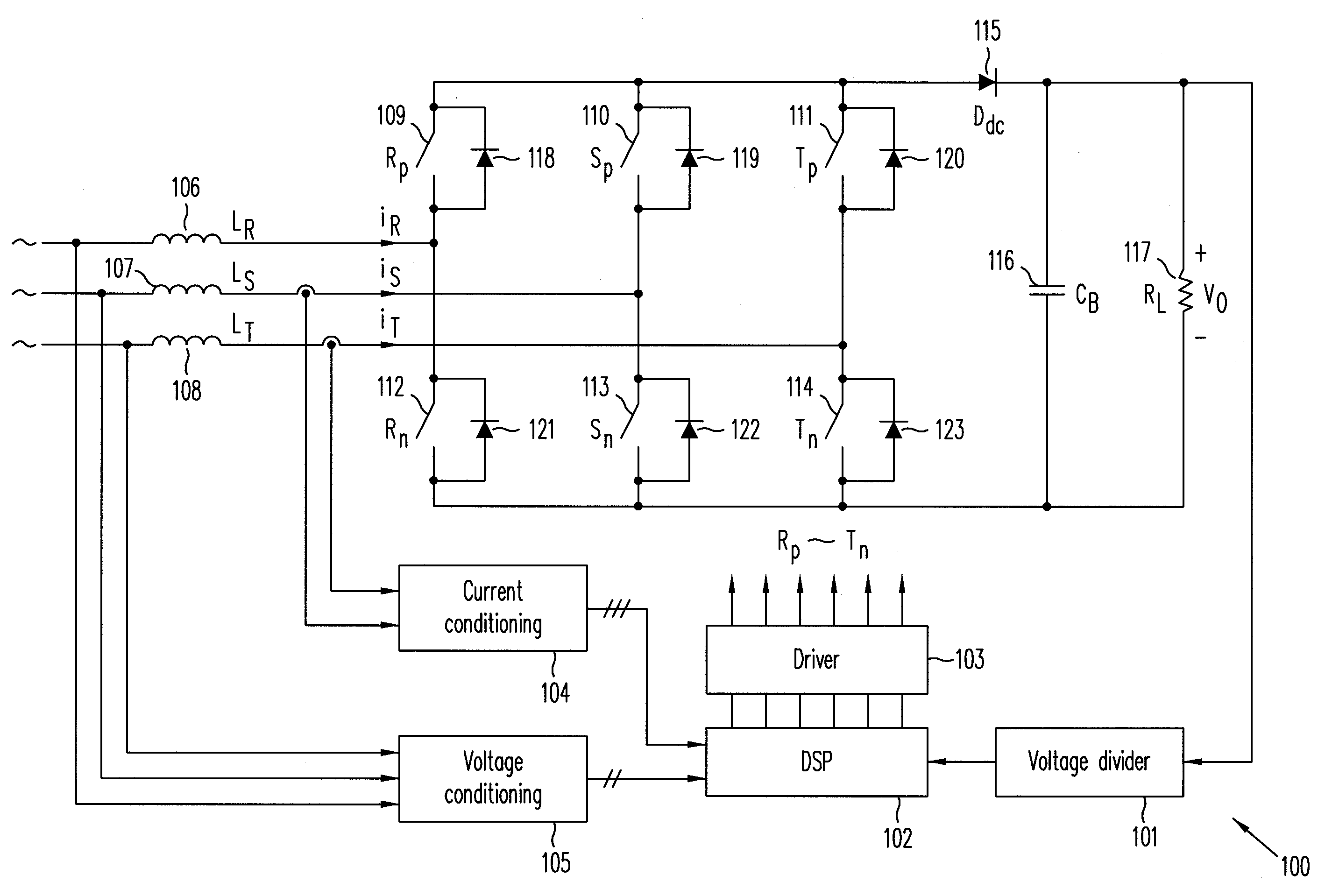Digitally controlled three-phase pfc rectifier
a three-phase rectifier and digital control technology, applied in the field of digital control of three-phase power converters, can solve the problems of not being applicable to a three-wire connection only three-wire rectifier, not being available in many practical applications, and not being applicable to a three-wire rectifier with only a three-wire connection (e.g. a delta). achieve the effect of simple and practical method
- Summary
- Abstract
- Description
- Claims
- Application Information
AI Technical Summary
Benefits of technology
Problems solved by technology
Method used
Image
Examples
Embodiment Construction
[0027]FIG. 1 is a circuit diagram of digitally controlled three-phase boost PFC rectifier 100 (“PFC rectifier 100”), in accordance with one embodiment of the present invention. As shown in FIG. 1, PFC rectifier 100 includes digital signal processor (DSP) 102 which receives as input signals (a) output voltage V0 from voltage divider 101, (b) the input voltages of PFC rectifier 100 from voltage conditioning circuit 105, and (c) two of the three input currents from current conditioning circuit 104. DSP 102 provides control signals from driver 103 to control or drive switches 109-114 of PFC rectifier 100.
[0028]With balanced three-phase input voltages, PFC rectifier 100 divides the line cycle of the input voltages into six 60° segments. Within each segment, the input phase voltages do not change sign, and the phase voltage with the largest absolute value and a sign opposite those of the other two phase voltages is “disabled,” while the other two phase voltages are “enabled.” During each ...
PUM
 Login to View More
Login to View More Abstract
Description
Claims
Application Information
 Login to View More
Login to View More - R&D
- Intellectual Property
- Life Sciences
- Materials
- Tech Scout
- Unparalleled Data Quality
- Higher Quality Content
- 60% Fewer Hallucinations
Browse by: Latest US Patents, China's latest patents, Technical Efficacy Thesaurus, Application Domain, Technology Topic, Popular Technical Reports.
© 2025 PatSnap. All rights reserved.Legal|Privacy policy|Modern Slavery Act Transparency Statement|Sitemap|About US| Contact US: help@patsnap.com



